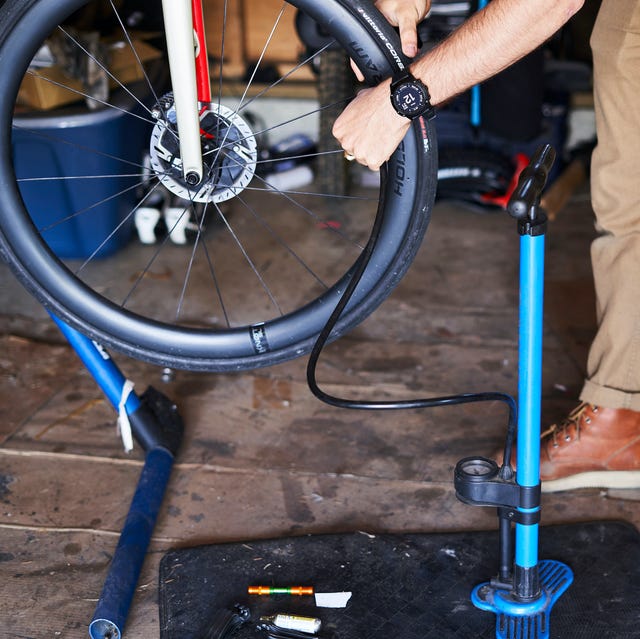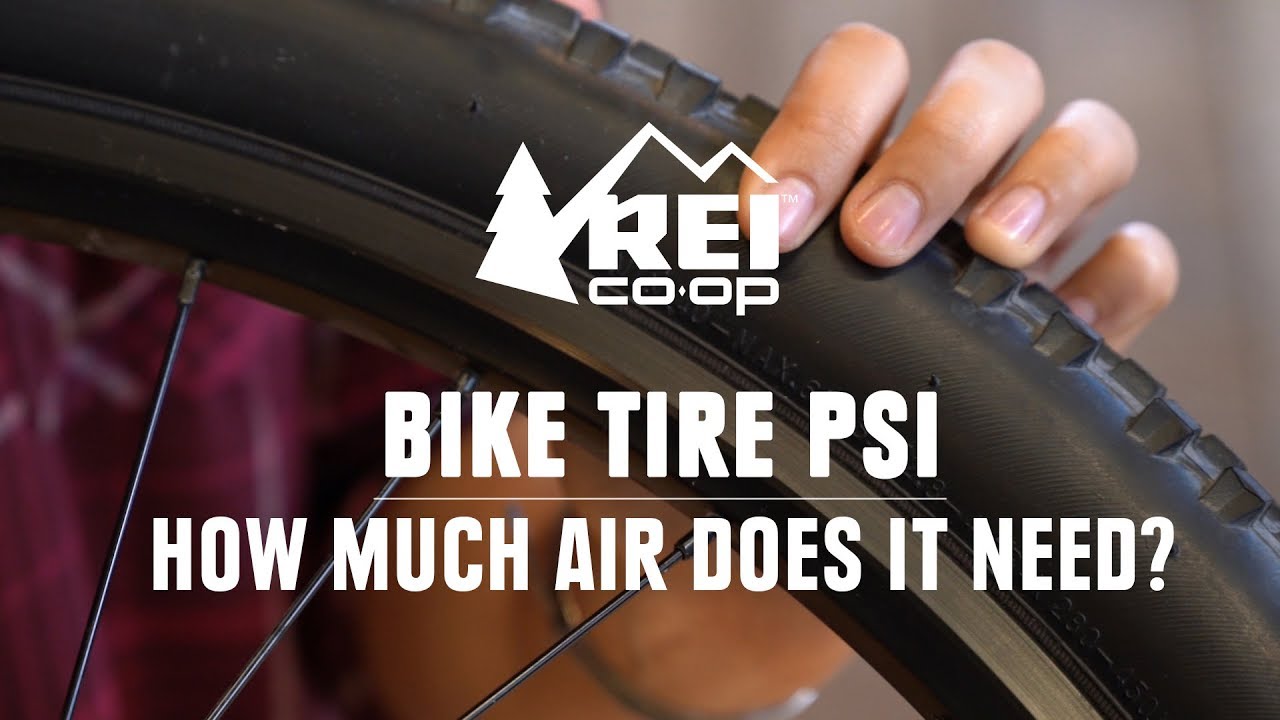The psi for bike tires is the pressure that is required to inflate them. This pressure is measured in pounds per square inch (psi). The optimal psi for bike tires varies depending on the type of bike and the terrain that will be ridden on.
For example, a mountain bike used on rough trails will require a higher psi than a road bike used on smooth pavement. Most bicycle tires have a recommended psi range printed on their sidewall. In general, it is best to err on the side of too much pressure rather than too little.
Too much pressure can make the ride uncomfortable and cause the tire to wear out prematurely. Too little pressure can result in a flat tire or increased rolling resistance.
Bike tires are one of the most important parts of your bike, and it’s important to know how to properly inflate them. The psi, or pounds per square inch, is the measure of how much air pressure is in your tire. Too little air pressure and your bike will be more difficult to ride; too much air pressure and your tire could burst.
To find out what the psi should be for your bike tires, first check the sidewall of your tires. There will be a range of numbers listed there, and you want to stay within that range. If you don’t have a gauge, most gas stations will have one that you can use for free.
Simply attach the gauge to your valve stem and press down on the lever to get a reading.
As a general rule of thumb, road bikes should have about 80-130 psi in their tires, while mountain bikes should have about 30-50 psi. But again, it’s best to check the sidewall of your tires to be sure.
Once you know the proper psi for your bike tires, inflating them is easy! Just use a hand pump or an air compressor (if you have one) to add air until you reach the desired pressure.

Credit: www.bicycling.com
What Psi Should My Bicycle Tires Be?
There is no definitive answer to this question as the ideal PSI for your bicycle tires will vary depending on a number of factors, such as the type and size of tire, the terrain you’ll be riding on, and your own personal preferences. However, there are some general guidelines that can help you determine a good starting point for finding the perfect PSI for your bike.
For road biking on smooth pavement, most experts recommend tires with a PSI between 80 and 130.
For mountain biking or riding on rougher terrain, you’ll want to decrease the pressure slightly to provide more traction and comfort. A good rule of thumb is to start with around 10% less PSI than what’s recommended for road biking. So, if you’re using 80 PSI road tires, start with around 72 PSI for mountain biking.
Of course, these are just general guidelines and you’ll ultimately need to experiment to find the perfect PSI for your own individual needs. But following these tips should help you get close to the sweet spot for an enjoyable ride no matter where you’re pedaling!
What is the Air Pressure for a 26 Inch Bike Tire?
A 26 inch bike tire is usually inflated to a pressure of 65 psi. This is the standard pressure for most mountain bikes and road bikes. However, some riders may prefer to inflate their tires to a higher or lower pressure depending on their riding style and the conditions of the terrain.
Is 40 Psi Ok for Bike Tires?
Bike tires are designed to be inflated to a certain range of pressures, depending on the tire. Most mountain bike tires can be safely inflated to between 20 and 35 psi, while road bike tires typically require 80 to 130 psi. While it’s possible to inflate a bike tire to 40 psi, it’s not recommended, as doing so may damage the tire or cause it to burst.
Bike Tire PSI: How Much Air Should You Put in Your Bike Tire? || REI
Bike Tyre Pressure Chart
Bike tyre pressure chart provides detailed information about the right amount of pressure that should be put in your bike tyres according to their size. It is very important to have the correct tyre pressure because it can affect your safety while riding, and also the durability of your tyres. Having too much or too little pressure in your tyres can cause them to wear out faster and can also make them more susceptible to punctures.
The best way to check if you have the correct tyre pressure is to use a bike pump with a gauge. Most bike pumps will have a handy guide on them that lists different tyre sizes and their recommended pressures. If you don’t have a bike pump with a gauge, you can usually find this information on the sidewall of your tyres.
Once you know what the correct pressure should be, inflate or deflate your tyres until they reach that level.
It’s always best toerr on the side of slightly higher rather than lower tyre pressures, as this will help prevent flats and give you a smoother ride. If you’re ever unsure, it’s always better to consult with a professional at your local bike shop who can help get you set up with the perfect tyre pressure for your individual needs.
Conclusion
Bike tires come in all shapes and sizes, but what’s the psi for bike tires? The answer may surprise you.
Psi is the measure of how much air pressure is in a tire.
Bike tires typically range from 30 to 60 psi. The higher the number, the more air pressure is in the tire. Higher PSI means that the tire will be harder, which can make for a smoother ride on pavement.
However, it can also make for a rougher ride on rough terrain. Lower PSI means that the tire will be softer, which can provide better traction on loose surfaces like dirt or sand. It can also provide a more comfortable ride on bumpy roads.
So, what’s the perfect psi for your bike tires? It depends on what type of riding you’re doing and what surface you’ll be riding on. If you’re mostly riding on pavement, a higher PSI is probably best.
If you’re going to be riding off-road or on uneven surfaces, lower PSI might be better.
